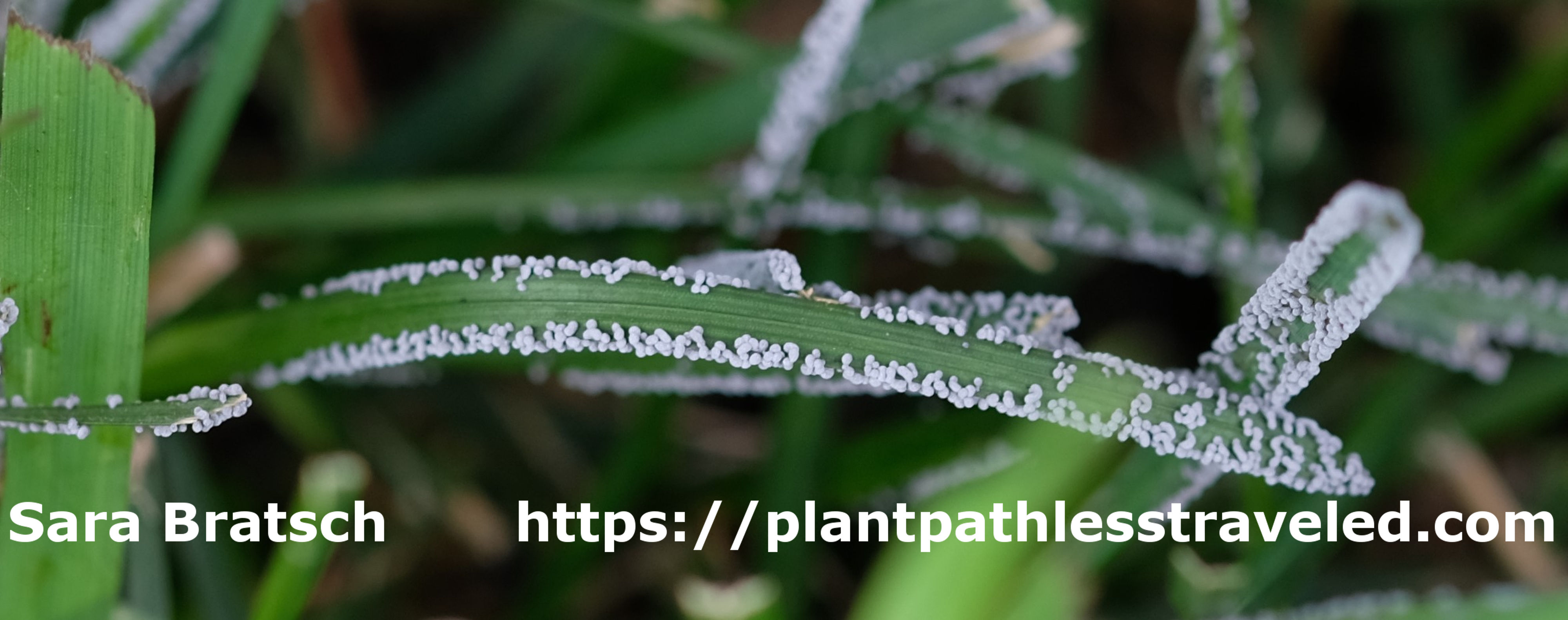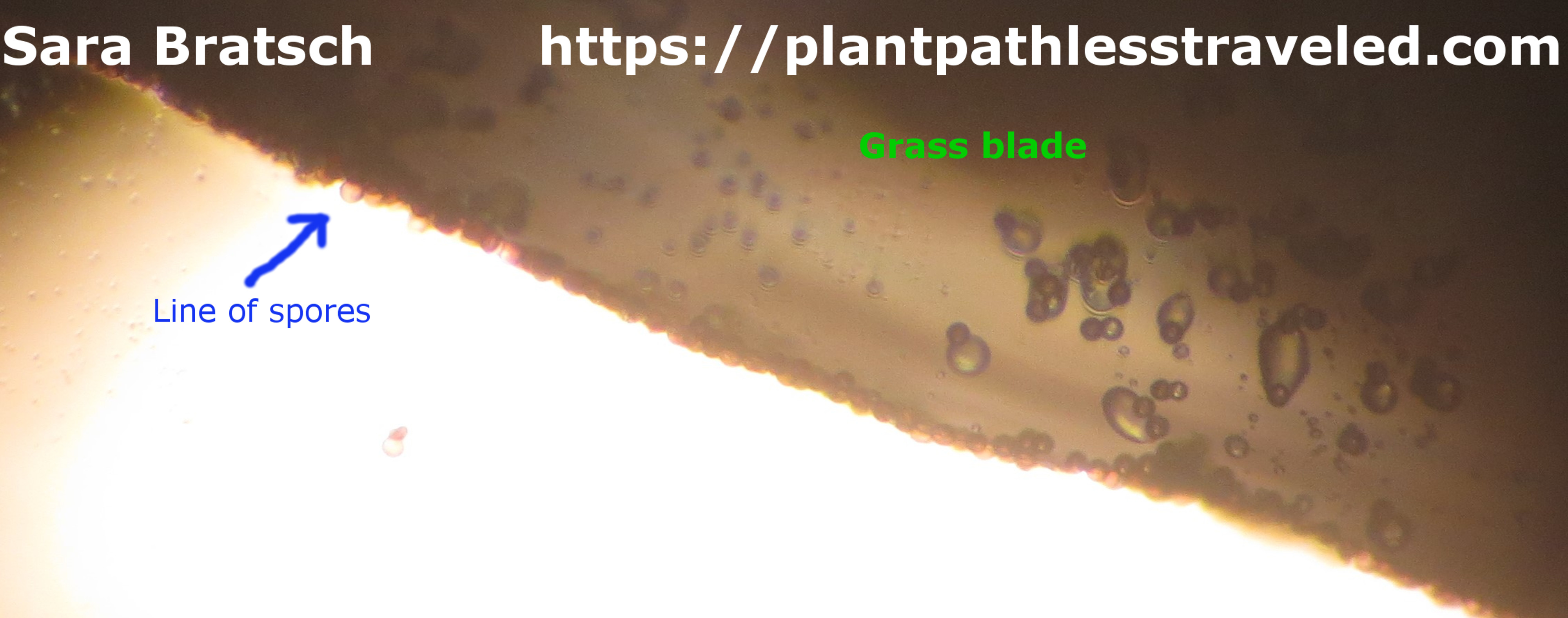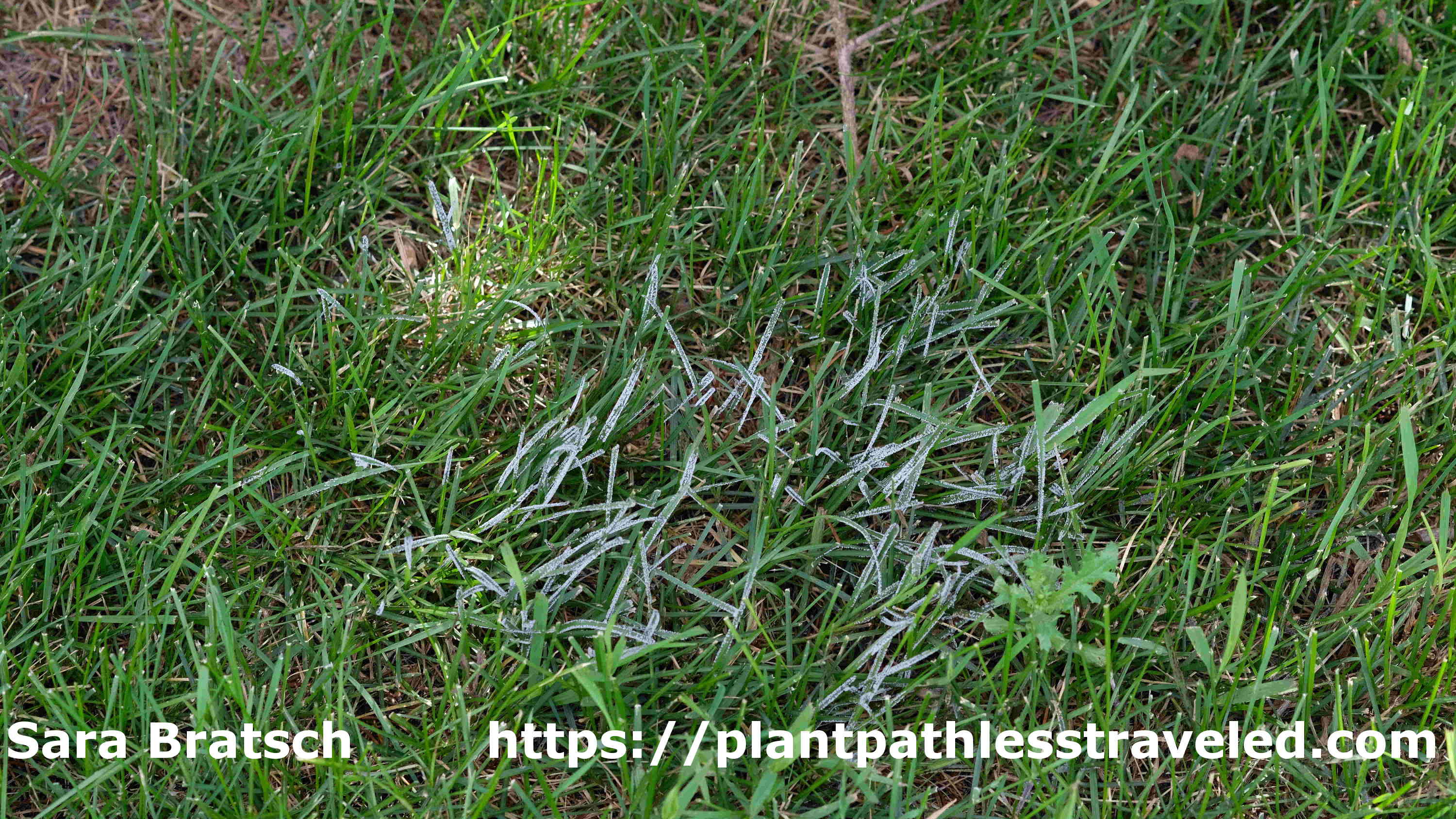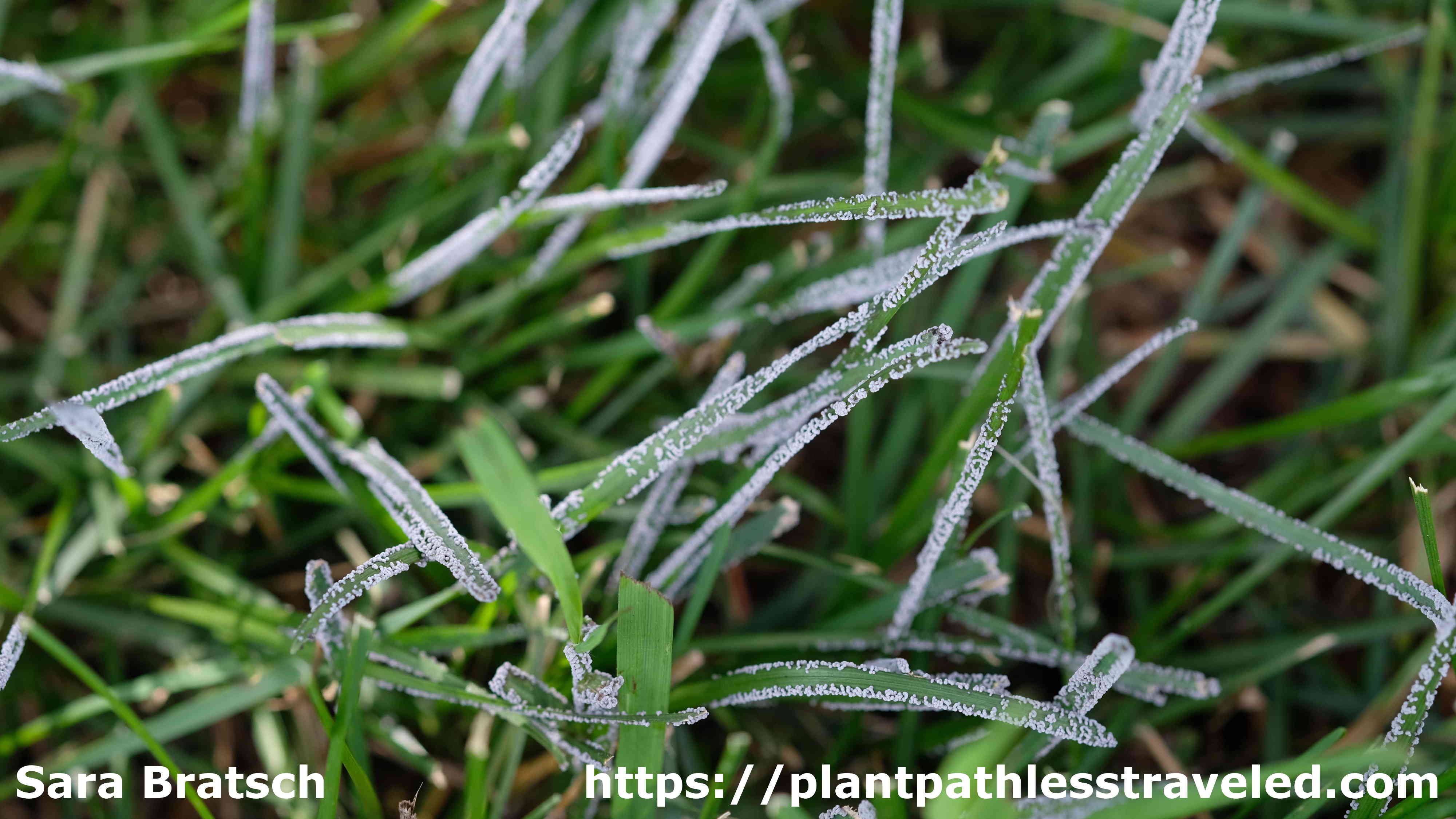Turf grass slime mold
After heavy rains an interesting organism called a slime mold may be found on turf grass or dead wood. As the name suggests, what appears is a slimly blob called a plasmodium. A plasmodium is actually mobile and will move to obtain food by engulfing it. Under proper conditions the slime mold will become immobile and form structures to release spores. Slime molds only eat dead material and are not classified as a pathogen. View pictures of the turf grass slime mold below.
Life cycle
Some slime molds like the dog vomit slime mold are visible in their plasmodium stage because it is brightly colored. However, the turfgrass slime mold is clear or watery-white during this life stage and is hard to observe.6 For the larger dog vomit slime mold it may be possible to observe where it has been as the mold will leave a trail of slime behind it.
The slime mold plasmodium life stage is different from most larger organisms as it is simply a ball of cellular fluids, nuclei, and other organelles (also called the protoplasm) contained by only a stretchable cell membrane.6 Most larger organisms consist of numerous cells with the protoplasm broken into separate compartments by cell walls and membranes.
Under proper conditions the plasmodium will form fruiting bodies which release spores.6 Physarum cinereum uses blades of grass as a tall structure to release spores from and is not eating the grass.7 The microscopic spores are spread by the wind which makes a tall grass blade a perfect spot to release spores from. These spores allow the slime mold to survive unfavorable conditions and spread to new food sources.
The sporulating life stage is commonly observed for the turf grass slime mold.7

 Microscopic view of slime mold, Physarum cinereum, spores in structures on the surface of the grass.
Microscopic view of slime mold, Physarum cinereum, spores in structures on the surface of the grass.
Life cycle continued6
When appropriate growing conditions return, the spores will break open and release cells called protoplast which develop flagella. These cells will move towards other cells and will fuse to form myxamoebae which then grow and becomes a new plasmodium. Although slime molds produce spores, they are not fungi and are actually classified as Protists.
Habitat
In addition to turf grass different species of slime mold can be observed on wood chips, timber retaining walls, fallen trees, leaves, and even fish tanks.2, 3, 6, 7 Slime molds can be found throughout the world, often appearing after rains, in damp areas with dead material to eat. In this case the slime mold was likely consuming the dead thatch during the plasmodium stage and then used the blades of grass as aerial structures to release spores from.7
Control 7
There are no control methods for slime molds as they do not damage the grass, clover, or other plants they may cover. If desired, the slime mold could be removed by brushing the affected leaves or mowing to remove the most heavily infested leaves. Spraying with water is not recommended because that will favor the development of new plasmodium from the newly released spores.
Other interesting information
If you are so inclined, you can actually purchase a kit containing a slime mold to keep as a pet or use for an educational tool.
Slime molds have gained popularity with videographers so it is possible to find videos and documentaries on various species of slime molds.
Computer scientists have made a simple biological computer with logical circuits using living slime mold tubes, instead of solid silicone, to process information.1
Another area of study with slime molds is their ability to solve mazes and optimize routes.4, 5
All photos taken by Sara Bratsch. For non commercial use only.
Please contact regarding all other uses including but not limited to: data for computational algorithms, books, pamphlets, articles, apps, websites, etc.
Cite this article:
Bratsch, Sara. 2018. "Turf grass slime mold". Web article. (date accessed). http://plantpathlesstraveled.com/turf-grass-slime-mold
Citations
- Adamatzky, A., & Schubert, T. (2014). Slime mold microfluidic logical gates. Materials Today, 17(2), 86-91.
- Hidden Forest. (2010). Species: Physarum cinereum. http://www.hiddenforest.co.nz/slime/family/physaraceae/physa16.htm
- Kasper. (2013). Slime mold in the Aquarium. https://fishtankdk.blogspot.com/2013/01/slime-mold-in-aquarium.html
- Nakagaki, T., Yamada, H., & Tóth, Á. (2000). Intelligence: Maze-solving by an amoeboid organism. Nature, 407(6803), 470.
- Nakagaki, T., Kobayashi, R., Nishiura, Y., & Ueda, T. (2004). Obtaining multiple separate food sources: behavioural intelligence in the Physarum plasmodium. Proceedings of the Royal Society of London B: Biological Sciences, 271(1554), 2305-2310.
- Shen, Y. F. (1964). A study on the life cycle of Physarum cinereum grown in culture. Taiwania, 10(1), 63-71.
- Vargas, J. M. (1993). Management of turfgrass diseases. CRC Press. 65-66.

